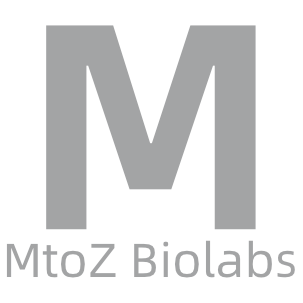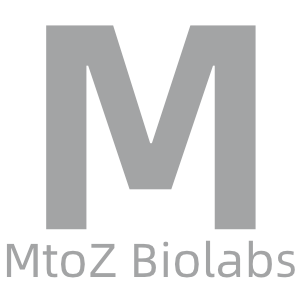Metabolomics Analysis
-
Vitamin A is a fat-soluble vitamin primarily found in sources such as liver (e.g., beef liver, chicken liver), fish liver oil, dairy products (e.g., milk, cheese), and egg yolks. These foods contain retinol, which is a direct source of vitamin A. Additionally, foods containing carotenoids, such as carrots, pumpkins, sweet potatoes, spinach, and other dark green vegetables, provide plant-based sources of vitamin A. Vitamin A is crucial for eye health, as it is an essential component of rhodopsin, a pigment
-
• Acenocoumarol Analysis Service
Acenocoumarol is a synthetic anticoagulant that belongs to the coumarin class of drugs. It is used clinically to prevent and treat thromboembolic disorders, such as deep vein thrombosis and pulmonary embolism. Like other coumarin derivatives, acenocoumarol works by inhibiting the synthesis of vitamin K-dependent clotting factors (including prothrombin, Factor VII, IX, and X), thereby preventing blood coagulation. The chemical structure of acenocoumarol is 4-hydroxy-3-(1-(4-nitrophenyl)-3-oxobutyl)-2H-chrome
-
Warfarin is a commonly used oral anticoagulant widely employed in the prevention and treatment of thromboembolic diseases, such as deep vein thrombosis (DVT), pulmonary embolism (PE), thrombosis caused by atrial fibrillation (AF), and thrombosis prevention after artificial heart valve replacement surgery. Warfarin works by inhibiting the action of vitamin K, thereby interfering with the synthesis of clotting factors and reducing the blood's ability to clot. MtoZ Biolabs provides qualitative and quantitative
-
Dicoumarol is a naturally occurring anticoagulant that was initially isolated from spoiled sweet clover hay and used clinically to prevent thrombosis. It is a coumarin derivative that inhibits the synthesis of vitamin K-dependent clotting factors (such as prothrombin, Factor VII, IX, and X), thereby preventing blood coagulation. Dicoumarol's chemical structure is 1,2-bis(4-hydroxycoumarin) with a molecular formula of C19H12O6. It features an aromatic ring structure with two coumarin groups linked by a methy
-
• Resveratrol Analysis Service
Resveratrol is a naturally occurring polyphenolic compound widely found in grape skins, blueberries, red wine, peanuts, and other plants. Resveratrol belongs to the stilbenoid class of compounds and consists of two phenol rings connected by an ethylene bridge. Its chemical name is 3,5,4'-trihydroxy-trans-stilbene, with a molecular formula of C14H12O3. It is mainly produced through the phenylpropanoid pathway in plants as a response to environmental stressors such as ultraviolet radiation and pathogen infect
-
• Rhaponticin Analysis Service
Rhaponticin is a natural compound extracted from plants, primarily found in species such as Rheum rhaponticum. It is a flavonoid glycoside and belongs to the stilbene glucoside class of compounds. Rhaponticin has garnered significant attention due to its various biological activities, particularly its potential therapeutic value in antioxidant, anti-inflammatory, and antitumor applications. The analysis of Rhaponticin is typically conducted using high-performance liquid chromatography (HPLC) and liquid chro
-
• Soyasaponins Analysis Service
Soysaponins are a class of glycosidic compounds naturally found in soybeans and other legumes. They are primarily present in different parts of soybean seeds, such as the seed coat, cotyledons, and hypocotyl, with varying concentrations. Additionally, they are found in small amounts in other legumes. These compounds belong to the saponin family, which are known for their surfactant properties, enabling them to form foam in aqueous solutions. Based on their chemical structure, soysaponins are mainly divided
-
• Ginsenoside Analysis Service
Ginsenosides are important active components found in Panax ginseng and belong to the class of triterpene saponins. The primary chemical structure types of ginsenosides are dammarane-type saponins, which are divided into 20(S)-protopanaxadiol types (such as ginsenoside Rb1, Rb2, Rc, Rd) and 20(S)-protopanaxatriol types (such as ginsenoside Re, Rg1, Rh1, Rf). These ginsenosides are considered the main source of ginseng's pharmacological effects and possess a variety of biological activities, including anti-i
-
• Salvianic Acid Analysis Service
Salvianic acid, also known as danshensu, is a naturally occurring phenolic acid widely found in the root of Salvia miltiorrhiza (commonly known as Danshen), a traditional Chinese medicinal herb. Salvianic acid belongs to the class of phenolic acids and consists of a catechol structure with a carboxylic acid group. Its chemical name is 3,4-dihydroxyphenyl lactic acid, with a molecular formula of C9H10O5. It is primarily produced through the phenylpropanoid pathway in plants as a response to various environme
-
Lutein is a carotenoid with the chemical formula C40H56O2, found widely in green leafy vegetables, corn, egg yolks, and other foods. It is one of the primary components of yellow and green pigments in plants and is a compound with strong antioxidant properties. Lutein is believed to play a crucial role in retinal health and in protecting the eyes from ultraviolet and oxidative damage. This is due to its structure, which includes a carbon chain with conjugated double bonds, allowing it to effectively capture
How to order?







